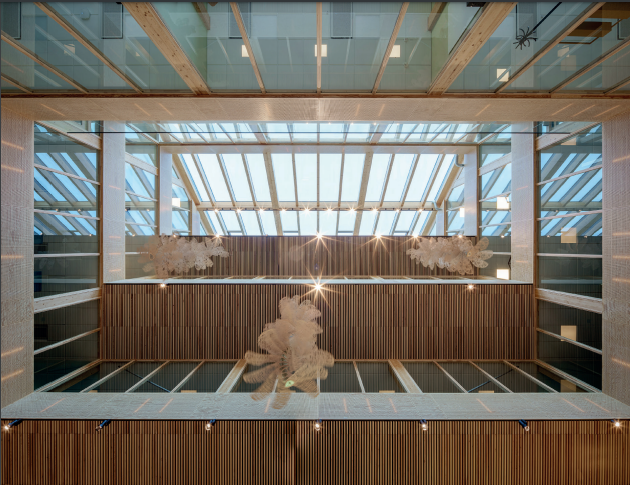Best Use of Certified Timber Prize winner: boosting sustainability and energy efficiency
Paseo Mallorca 15 by OHLAB architects is the winner of the 2022 Best Use of Certified Timber prize, supported by PEFC.
Best Use of Certified Timber Prize winner: boosting sustainability and energy efficiency
22 December 2022 Sustainable construction
Paseo Mallorca 15, designed by OHLAB architects, recently won the Best Use of Certified Timber prize, supported by PEFC, at the 2022 World Architecture Festival (WAF).
The Prize recognises architects for their use of certified timber as a key element of their project and something that makes it stand out in terms of sustainability, innovation, quality and aesthetics. WAF and PEFC awarded the Prize for the fourth time.
Celebrating local tradition and sustainability

Set on a tree-lined promenade in the heart of the Spanish city of Palma de Mallorca, Paseo Mallorca 15 is a new residential complex for client RAMIS Promociones and has sustainability and energy efficiency at heart.
The striking façade, supplied by Grupo GUBIA is made of PEFC-certified Scots pine that has been thermally modified due to the building’s close proximity to the sea.
This treatment gives the timber minimal contractions and expansion movements. Vertical timber slats are brushed on all sides, with different sections and separations, then fixed to an anodised aluminium frame.
More than 350 fixed and sliding timber panels change the vision of the building continually and act as a solar filter/brise soleil.
The design reflects traditional Majorcan carpentry and according to OHLAB is a “re-reading of the island's traditional materials and systems… carried out in an abstract and contemporary key, creating a building that seeks to be totally efficient and sustainable, as well as creating a pleasant and stimulating sensory experience for its inhabitants.”
The project has been designed according to Passivhaus standards to achieve maximum energy efficiency and to provide a healthy, comfortable living environment. Passivhaus standards aim to achieve an air-conditioning demand of less than 15kWh/(m2a), meaning heating and cooling requirements are reduced by up to 90% compared to a conventional building.

The winner was announced at a Gala Dinner on 2 December, by PEFC’s Head of Marketing Fabienne Sinclair. The judges praised the project for its “masterful control of light” and “timeless beauty and technical innovation.”
“The building shows the many ways that PEFC-certified material can deliver sustainability to global building design,” said Fabienne Sinclair.
“Every time we have supported this Award, we have been thrilled to see how architects have used certified timber. As we all strive to meet net zero commitments, incorporating PEFC-certified timber as a construction material makes a key contribution.”
The highly commended prize

In addition to the winning project, the jury honoured the Växjö Town Hall and train station project by SWECO with a highly commended prize.
One of the largest wooden buildings in Sweden, Växjö was built in skeleton construction with a wooden frame of PEFC-certified cross-glued wooden elements, and Binderholz CLT BBS ceilings.
The many visible wooden elements inside the building, such as ceilings, wall coverings, floors, and stairs, help create a warm and welcoming feeling.
Photo credits: José Hevia, World Architecture Festival, Felix Gerlach